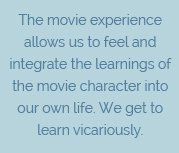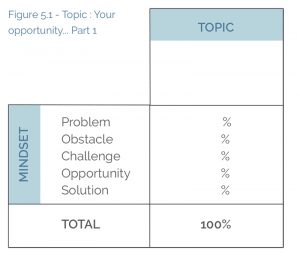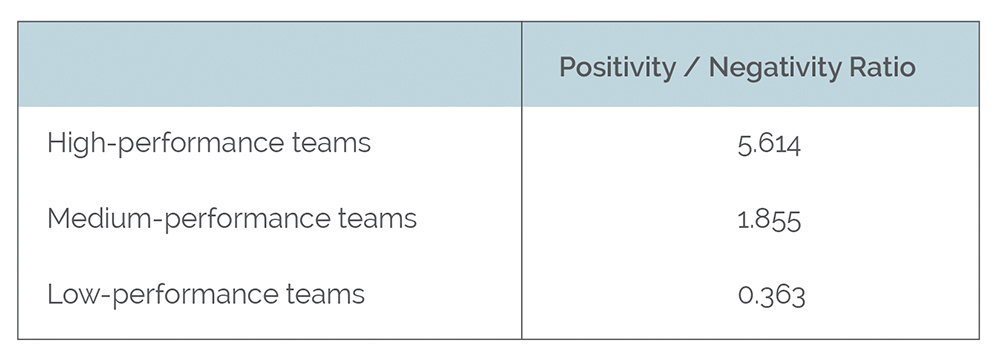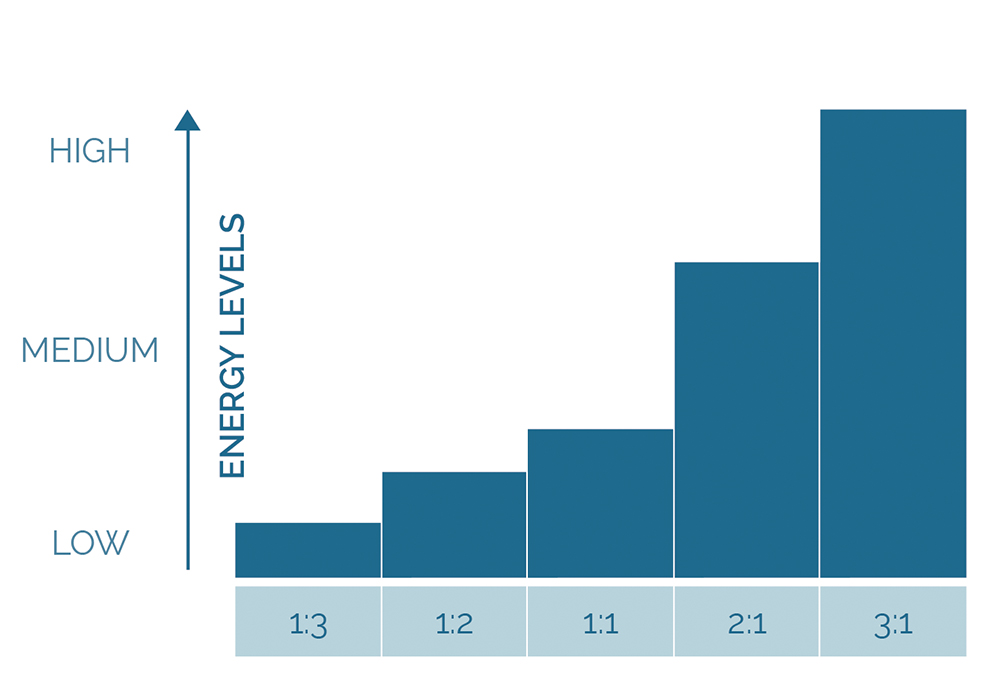“Through the mythology of Einstein, the world blissfully
regained the image of knowledge reduced to a formula”
The 3-step fantasy formula
In Part 2 we started to entertain the idea that physicality can assist us in applying our imagination to test for a more compelling future; a scenario where you have an experience that brings out more of the best in you.
Now it’s time to look at utilising a 3-step formula that will allow us to test a fantasy incrementally so that we only go on to manifest the ones we truly want. This way we can mindfully test step by step:
Step 1 of 3: determine if it’s a type 1, 2 or 3 fantasy
We explored these in Part 2:
Type 1 – Fictional fantasy
Type 2 – Fantastic fantasy
Type 3 – Fulfilment fantasy
If your fantasy falls more into type 1 or type 2, it would be best to leave it to one side, at least for now. These might be potentials for the future but for now we are only interested in taking type 3s forward. Once you have a measure of practice and skill, you can play with the other types.
Type 3s are usually based on experiences we’ve had ourselves or perhaps someone we know has told us about an experience and we liked the sound of it. We usually have a good intuitive feel for the level of safety and the level of excitement this experience could bring. You could say that we’ve had the taster and now we want some more.
Here are three relevant examples that people have shared with me (I’m using them with their permission).
- Pack their bags tomorrow and travel the world for a year without a care in the world.
- Throw caution to the wind and splash out on something very luxurious and not very practical.
- Play out a naughty role in a sensual context.
None of these fantasies will be completely new to us. We will already have experienced something like them, or perhaps we have read about them, watched them in a movie or heard of them via word of mouth. As the last examples in that list demonstrate, we might only have experienced the fantasy in our own imagination.
Step 2 of 3: DVD tester
Before taking your type 3 fantasy out into the real world, apply the DVD tester idea which I spoke about in Part 1 of this series of articles. It’s always a good idea to run a test movie first.
The test movie could be of anything you choose however I propose one where you enjoy your best ever massage. This brings in the all-important physical aspect which is key to the successful manifestation of your fantasy – and it’s highly enjoyable too!
Imagine inserting your DVD into a player and, when you press play, you watch a movie of you having your ideal massage whether you have actually had a real life experience or just have to use your imagination. It’s very easy for me as I have already had many massages in real life. I once experienced a massage where the hot oil was a mixture of some of my favourite essential oils and I had two masseuses working on me. It was gentle to start with and got quite firm in the middle before easing off to a soothing finish. It felt like every knot in my body had been eased away and I was walking on air afterwards. I would love to experience this again so it’s an easy DVD for me to play… over and over.
 You might be able to picture a scene where you can see yourself comfortably laid on a massage bed. Your body is getting heavier and heavier as your anticipation of deep relaxation grows. Now the warm oil eases onto your skin and it is just the right temperature. The scent is both soothing and exhilarating. Your masseuse’s hands move over your body, your muscles soften and the oil sinks in and eases away any lurking tension. Sometimes the touch is firm and then it softens, allowing you to sink deeper into relaxation. Your breathing deepens as you surrender to the experience. You notice which parts of your body and mind that had been feeling tight and tense before are now loosening up and moving into ease and effortlessness. You might even find that you are smiling as you read this.
You might be able to picture a scene where you can see yourself comfortably laid on a massage bed. Your body is getting heavier and heavier as your anticipation of deep relaxation grows. Now the warm oil eases onto your skin and it is just the right temperature. The scent is both soothing and exhilarating. Your masseuse’s hands move over your body, your muscles soften and the oil sinks in and eases away any lurking tension. Sometimes the touch is firm and then it softens, allowing you to sink deeper into relaxation. Your breathing deepens as you surrender to the experience. You notice which parts of your body and mind that had been feeling tight and tense before are now loosening up and moving into ease and effortlessness. You might even find that you are smiling as you read this.
As you watch your own movie, notice the signals that let you know how much you are enjoying the experience. It could be the look of absolute bliss on your face. It could be deep sighs of relaxation. It could even be groans of pleasure as your muscles release and the pressure of the massage penetrates all the tense areas.
You might even find that just reading and imagining the massage right now has given you a desire to try a massage out in real life.
When the DVD finishes, I would like you to imagine using a remote control to take you back to the part you enjoyed the most. Just pause the movie there for a few moments. Then, when you are good and ready, simply eject the DVD. Your last memory of it will be the part you enjoyed the best.
Now, if you feel adventurous, go ahead and insert another DVD. This one is for something that you would like to experience in your life but just in the safe space of your imagination to start with. This will give you the chance to work out how much you enjoy the experience safe in the knowledge that you are only testing it out. Here you will see yourself enjoying the fantasy you have selected.
Step 3 of 3: Gradually bridge the reality gap with lots of small incremental steps
If you enjoyed the movie enough to want to take it out into the real world, we will now test it in a way that brings both your psychology and your physiology into play.
Utilising physiology helps the mind and body connection work together to take the next step towards turning your imagined fantasy into reality.
Let’s run it through in your imagination first. By the way, you will need some open floor space for this. Now imagine 10 stepping stones laid out on the floor in front of you. Each one represents a different moment in time during the fantasy and they will allow you to test for how it could be experienced out in the real world.
 Step 5 is the mid-way point. Steps 0 to 4 lead up to the fantasy experience and 6 to 10 are what you will experience afterwards. All of these steps help give the fantasy context: a before and after; a beginning, middle, and an end. This helps the mind see how best to turn a mere fantasy into a living, breathing and real part of your life as you grow into the best version of yourself.
Step 5 is the mid-way point. Steps 0 to 4 lead up to the fantasy experience and 6 to 10 are what you will experience afterwards. All of these steps help give the fantasy context: a before and after; a beginning, middle, and an end. This helps the mind see how best to turn a mere fantasy into a living, breathing and real part of your life as you grow into the best version of yourself.
So let’s get physical with the 10 steps. In a place where you will not be disturbed, count out enough floor space for 10 physical steps. They don’t need to be big, just a comfortable step length. You could even mark them out by laying down 10 pieces of A4 paper if you want to.
Stand at Step 0. Hold in mind the theme of your fantasy, then:
- Close your eyes, take a deep breath, and slowly take 10 steps forward.
- At step 10, imagine what you will experience one year after your fantasy. When you have a good idea of what this might look like, take a step back to step 9. You will step back as you work through each step.
- At step 9, imagine seeing yourself one month after your fantasy experience.
- At step 8, imagine seeing yourself one week after your fantasy experience.
- At step 7, imagine seeing yourself one day after your fantasy experience.
- At step 6, imagine seeing yourself one hour after your fantasy experience.
- At step 5, imagine you have your DVD remote control in your hand. Fast reverse through the movie.
- At step 4, imagine what you will experience one hour before your fantasy experience.
- At step 3, imagine seeing yourself one day before your fantasy experience.
- At step 2, imagine seeing yourself one week before your fantasy experience.
- At step 1, imagine seeing yourself one month before your fantasy experience.
- At step 0, open your eyes.
The aim here is to test to see if you felt an overall future that was so compelling that you would like to invest your time and energy into giving your fantasy more chance of becoming a physical reality.
So, how could this help us in our lives I hear you ask? Well, isn’t it wise to harness all our resources when we want to bring more of what we truly want into our lives?
Summing up…
Whatever fantasies you have in mind, it’s useful to distinguish the ones that are for personal entertainment only and the ones that have real-world physical potential for yourself.
They might not want to immediately become hard physical realities, but at least you are now more aware of the importance of engaging your physiology when you want to make one or more of your true desires a living, breathing reality.
And do bear in mind that we are only becoming aware here of what may already be happening to a degree in your life, except it is happening on autopilot: persistent problems all start as fantasies as far as the mind is concerned.
Maybe it’s just me, but surely it is better to design your life by choice rather than fall victim to auto-pilot?
 Category 1 might include what we want to experience at some stage and we are looking to have a useful measure of control over that happening but only when we get better at discerning how we use our powerful imagination. When a person is too busy and stretched, they might cross over from conscious engagement with their fantasies to fantasies run on autopilot… and that could lead to all kinds of trouble.
Category 1 might include what we want to experience at some stage and we are looking to have a useful measure of control over that happening but only when we get better at discerning how we use our powerful imagination. When a person is too busy and stretched, they might cross over from conscious engagement with their fantasies to fantasies run on autopilot… and that could lead to all kinds of trouble. Each year at the Oscars the winning lead actor was usually starring in a movie based on a character making good against all the odds. Slumdog Millionaire was nominated for 10 Academy Awards in 2009 and won eight, including best picture. The movie covers a young Indian man’s experience on a notorious game show that is also called Slumdog Millionaire. We see how he tackles each question not so much from intellect as he is just an ordinary guy in an ordinary day job in customer support in a telephone call centre. We soon realise that he has the experience and wisdom of someone much older as his harsh life as an orphan gave him lessons that were both harrowing and valuable. The game show provides the backdrop of the movie and shows how he faces life and how he grows rich from each and every life experience.
Each year at the Oscars the winning lead actor was usually starring in a movie based on a character making good against all the odds. Slumdog Millionaire was nominated for 10 Academy Awards in 2009 and won eight, including best picture. The movie covers a young Indian man’s experience on a notorious game show that is also called Slumdog Millionaire. We see how he tackles each question not so much from intellect as he is just an ordinary guy in an ordinary day job in customer support in a telephone call centre. We soon realise that he has the experience and wisdom of someone much older as his harsh life as an orphan gave him lessons that were both harrowing and valuable. The game show provides the backdrop of the movie and shows how he faces life and how he grows rich from each and every life experience.

 What this allowed was the minds of the audience set aside their adult mind sets and engage into a childlike state of possibility. The permission and ability to distance themselves from reality allowed them to enjoy the movie even more.
What this allowed was the minds of the audience set aside their adult mind sets and engage into a childlike state of possibility. The permission and ability to distance themselves from reality allowed them to enjoy the movie even more. What we can say is that whatever a person creates a mental image off and holds in mind is an indication to the subconscious mind of what we want it to apply our resources to and make come about. It can therefore be said to be a ‘form of rehearsal’.
What we can say is that whatever a person creates a mental image off and holds in mind is an indication to the subconscious mind of what we want it to apply our resources to and make come about. It can therefore be said to be a ‘form of rehearsal’. The analogy I would like to introduce is the ‘Tester DVD’ concept. I had a friend that wanted to go somewhere quite exotic for a vacation a few years back. She had heard of Antigua but didn’t really know enough about it. What she discovered was one travel company provided DVD’s with lots of footage of some of the key sights and sounds she could expect to experience. Not so much that it would take away anything from a person’s experience of the adventure, just enough so they get a feel for whether it is right for them. This is in no way a guarantee that if you followed this idea that you will be happy with the purchase of your vacation but it cuts out a lot of the potential for regrets.
The analogy I would like to introduce is the ‘Tester DVD’ concept. I had a friend that wanted to go somewhere quite exotic for a vacation a few years back. She had heard of Antigua but didn’t really know enough about it. What she discovered was one travel company provided DVD’s with lots of footage of some of the key sights and sounds she could expect to experience. Not so much that it would take away anything from a person’s experience of the adventure, just enough so they get a feel for whether it is right for them. This is in no way a guarantee that if you followed this idea that you will be happy with the purchase of your vacation but it cuts out a lot of the potential for regrets.



 We can liken attraction to magnetism. I recall the day in junior school when I was amazed at how two pieces of magnetised metal could be pulled together or repelled from each other. It was almost magical.
We can liken attraction to magnetism. I recall the day in junior school when I was amazed at how two pieces of magnetised metal could be pulled together or repelled from each other. It was almost magical. When we transcend time with our imagination we tend to experience a slight hypnotic state. We can test this now by asking a couple more questions. Please feel free to join in.
When we transcend time with our imagination we tend to experience a slight hypnotic state. We can test this now by asking a couple more questions. Please feel free to join in. Imagined time
Imagined time Like one of my friends… She once told me the way she tested potential partners. She would always insist that a first date would be a meal for two. She didn’t mind if she had to pay because she felt it was such a useful way to gather important information: the way the guy handled his knife and fork, how he spoke with the staff serving them and the rest of his behaviour in that setting would reveal many of his traits very quickly. She even believed that she could anticipate his potential as a lover by his gestures.
Like one of my friends… She once told me the way she tested potential partners. She would always insist that a first date would be a meal for two. She didn’t mind if she had to pay because she felt it was such a useful way to gather important information: the way the guy handled his knife and fork, how he spoke with the staff serving them and the rest of his behaviour in that setting would reveal many of his traits very quickly. She even believed that she could anticipate his potential as a lover by his gestures. So maybe she wasn’t being shallow at all. Perhaps she was actually being very direct and was consciously doing what most people do on autopilot.
So maybe she wasn’t being shallow at all. Perhaps she was actually being very direct and was consciously doing what most people do on autopilot. I was watching the BBC news in early 2017 when it mentioned a novel idea by Dutch engineer Henk Hesselink. He had designed a circular runway. Initially I raised a brow as I thought of all the reasons why this was a crazy idea but, as the story continued, my cynicism vanished. By the end I was thinking: “Wow, why hasn’t someone thought of this before?”
I was watching the BBC news in early 2017 when it mentioned a novel idea by Dutch engineer Henk Hesselink. He had designed a circular runway. Initially I raised a brow as I thought of all the reasons why this was a crazy idea but, as the story continued, my cynicism vanished. By the end I was thinking: “Wow, why hasn’t someone thought of this before?” Pam Hogg, a fashion designer based in Glasgow, Scotland shared a story from TEDx 2016 Glasgow. You might enjoy watch Pam’s talk which is about 15 minutes long. Here’s the link:
Pam Hogg, a fashion designer based in Glasgow, Scotland shared a story from TEDx 2016 Glasgow. You might enjoy watch Pam’s talk which is about 15 minutes long. Here’s the link:  Princess Diana was one of the most photographed women of all time. Just a small change in her fashion or looks would be eagerly shared with the waiting world. On one occasion, she surprised, even shocked, awaiting press with a short and gelled hairdo. The change was so great that at first the photographers weren’t even sure it was her. A top London stylist took the credit for this change of style which of course was quickly taken up by the fashion world.
Princess Diana was one of the most photographed women of all time. Just a small change in her fashion or looks would be eagerly shared with the waiting world. On one occasion, she surprised, even shocked, awaiting press with a short and gelled hairdo. The change was so great that at first the photographers weren’t even sure it was her. A top London stylist took the credit for this change of style which of course was quickly taken up by the fashion world.






 I have worked with the positivity/negativity ratio (P/N) and have found that the wrong balance makes us feel as though we are swimming upstream whereas the right one feels more like flowing with the current. A positive to negative ratio can work for us or against us. Imagine walking into a headwind and how much effort that takes versus what it feels like when the wind is at your back. However, the wind is not an enemy; it is just a form of energy.
I have worked with the positivity/negativity ratio (P/N) and have found that the wrong balance makes us feel as though we are swimming upstream whereas the right one feels more like flowing with the current. A positive to negative ratio can work for us or against us. Imagine walking into a headwind and how much effort that takes versus what it feels like when the wind is at your back. However, the wind is not an enemy; it is just a form of energy.


 I like examples so let’s look at one from arguably one of the best sports coaches in history, Vince Lombardi. I won’t go into too much detail here but what he did in essence was ask each of his team players and even the people involved with the team to make a commitment. He simply requested each of them to make a small improvement every year. You might think that this is falling short but Vince understood the compounding effect. When every player and the people helping those players make a small improvement, together that improvement is significant. He proved this not just with his team and their success but with their attitude and commitment which kept getting better year on year. No improvement was disregarded; they were all counted and appreciated.
I like examples so let’s look at one from arguably one of the best sports coaches in history, Vince Lombardi. I won’t go into too much detail here but what he did in essence was ask each of his team players and even the people involved with the team to make a commitment. He simply requested each of them to make a small improvement every year. You might think that this is falling short but Vince understood the compounding effect. When every player and the people helping those players make a small improvement, together that improvement is significant. He proved this not just with his team and their success but with their attitude and commitment which kept getting better year on year. No improvement was disregarded; they were all counted and appreciated.



